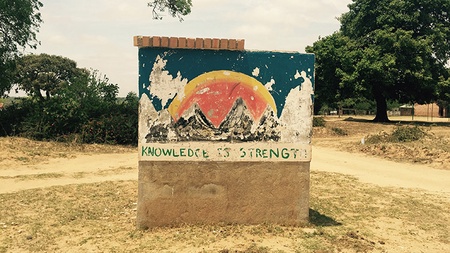Recording more details about the lives and deaths of some of the world's poorest people and communities, and using this information to work in partnership with policy makers to improve healthcare services is the focus of a new £700k, five year project by a University of Aberdeen researcher.
Information on medical cause of death is crucial for the delivery of effective health care but currently the causes of around two thirds of all deaths in the world, the majority in the developing world, go completely unrecorded.
Without this information, health care authorities are unable to effectively put in place measures to counteract causes of death in their communities. Similarly without communities playing an active role in generating evidence on living standards and passing it on to the people who can influence change, it is impossible to create health services that are fit-for-purpose.
Dr Lucia D’Ambruoso from the University of Aberdeen has been working with colleagues at the University of the Witwatersrand in Johannesburg, South Africa, to collect this information using techniques called Verbal Autopsy and Participatory Action Research.
The process involves fieldworkers visiting local communities at regular times to talk to people about the symptoms and circumstances of family deaths to get a fuller picture of what contributed to the situation.
Dr D’Ambruoso and the research team have worked in close conjunction with local communities and health authorities in South Africa to adapt process to ensure the data is as relevant and understandable to all parties as possible.
In prior development work, local people play an active role in producing data. A novel example being using cameras to document their own living environment – giving authorities a fuller understanding of how wider living conditions contribute to health and illness.
Dr D’Ambruoso explains: “If a person’s life is never officially recorded then that person has no access to health, education, housing, inheritance or justice. The detailed recording of births and deaths is one of the most important things needed to ensure a fit-for-purpose healthcare system as well as enabled a range of wider claims for public goods.
“We want to co-produce information on health and illness and through that process shift power towards those most directly affected. It is essential that we work with communities to co-produce evidence and learn from action and engage with health policy makers and planners to actively use this evidence in the delivery of care.
“We have elaborate ways of recording medical cause of death – the UN, WHO international classification of diseases has 67,000 cause categories around organ failure and blood loss. It’s highly sophisticated but conceptually narrow.
“By adding information about the circumstances of death, we can provide comprehensive data to inform planners and policy makers. Our hope is that this technique will beneficial at different levels of the health system, regionally in Southern Africa and internationally to groups such as WHO.”
Funding for the five year grant to support this work is provided by Medical Research Council (MRC), Economic and Social Research Council (ESRC), Wellcome Trust, Department for International Development (DFID) as part of the Health Systems Research Initiative, 2017.
Case Study
A woman in Burkina Faso gives birth to a baby at 10am. The woman was attended by her sister but suffered a retained placenta and started to bleed.
A traditional healer was called, who massaged the woman in a bid to deliver the placenta but was unsuccessful. A second healer was called and eventually the placenta was delivered.
The woman continued to bleed, however, so at 1pm an ambulance was called. Unfortunately, the ambulance took two hours to reach the woman’s village and she died on the way to hospital.
Dr D’Ambruoso says: “This woman’s death would be recorded as a haemorrhage, which it was. If that information makes its way into the local health authorities’ policy and planning, along with other cases of ‘death due to haemorrhage’ the authorities will probably improve blood stocks at the hospital and train more nurses and doctors to deal with transfusion.
“However, this completely ignores the fact that the woman never made it to the hospital. These improved resources would not have helped her. The recording of her death doesn’t tell the real story of why she died.”
Research Team
Principal Investigator: Dr Lucia D'Ambruoso University of Aberdeen
Co-Investigators: Professor Peter Byass Umea Centre for Global Health Research Umea University; Professor Sophie Witter Queen Margaret University Edinburgh Institute for Global Health & Development; Professor Stephen Tollman University of the Witwatersrand Faculty of Health Sciences; Professor Kathleen Kahn University of the Witwatersrand School of Public Health; Co-Investigator Ms Rhian Twine University of the Witwatersrand Faculty of Health Sciences; Co-Investigator Dr Barry Spies Mpumalanga National Dept of Health (South Africa) Department of Health Nelspruit; Co-Investigator Ms Maria van der Merwe Mpumalanga National Dept of Health (South Africa).
Advisory Group: Professor Lucy Gilson at the University of Cape Town and the London School of Hygiene and Tropical Medicine (LSHTM), UK; Dr Rene Loewenson at Training and Research Support Centre/EQUINET in Harare, Zimbabwe; and Professor Wendy Graham at the University of Aberdeen and LSHTM


